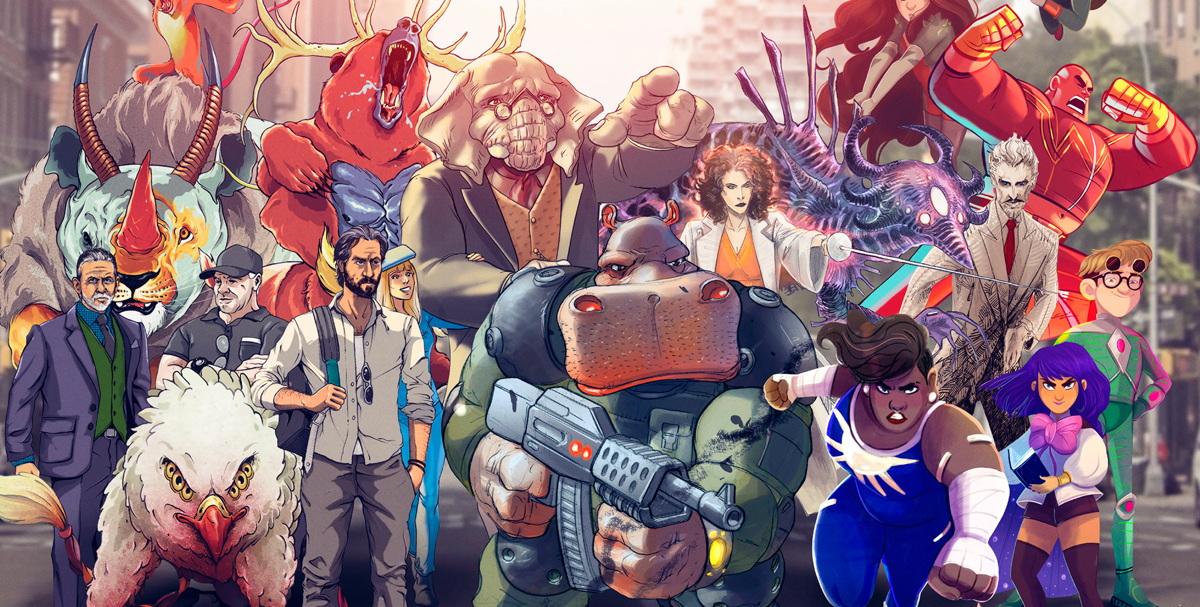Last time we talked about Comixology soliciting some new content and what that could mean in the big picture. Today, it’s time to talk about their Print on Demand offering. A lot of people seemed to have picked up on this being the bigger deal, but very few people seem to realize that we don’t completely understand what Amazon is really doing here. Let me explain that statement:
The pilot comic for this is Savage Game. 62 pages, for $6.99. 6.6 x .2 x 10.2 inches.
Those details on Savage Game? They shouldn’t be possible with Amazon’s POD practice.
CreateSpace is Amazon’s POD unit. Guess what? They don’t have a 6.6 x 10.2 inch format.
Guess what else? If you put in 60 pages and $6.99 at the price category for that general size at CreateSpace (there are 3-4 similar sizes all at the same price point), the royalty calculator says that you’re losing $1.00 every time a book is sold.
- We’re likely dealing with a custom size
- We’re dealing with a different pricing structure or perhaps this is an intentional loss leader
- We have no idea if they’re using the standard CreateSpace paper options or something new, seeing as how they’re already on a custom size
Let’s back up a little. I should probably point out that I spent most of 2013 working with a digital publishing startup on integrating POD books with their digital line and I specifically did a lot of work prototyping color comics with POD. This was a year before Amazon bought Comixology. I’ve spent some time with the technology and I was really expecting Comixology to start offering this two years ago. Amazon’s had all the resources in-house.
One of the traditional problems with color Print on Demand is that it’s been prohibitively expensive for comics. Back in August of 2012, Ingram Content redid their color POD pricing to make comics a feasible product. My understanding is that color POD was originally envisioned as being used by children’s picture books. You know, $10-$20 for something like 20 pages in hardcover? Completely different set of economics. Ingram changed the pricing to allow for other uses. CreateSpace hasn’t… or are they about to and Comixology is the beta test? Or is this a new set of pricing that Comixology is only going to show to people they recruit into the Originals program?
I’m sure Amazon would not like there to be a price war for color POD with Ingram (the other main POD source). However, if you are a creator, consumer or a publisher, you want a price war. And how.
This is easier to discuss if everyone knows the basics of the market, so here’s the short version of what the deal is with color POD for comics: a lot of it depends on the style of coloring and the paper. When you get gradients in the coloring, if the paper can’t hold enough ink, you get some minor bleeding. Now, cheap paper isn’t exactly a new problem with trade paperbacks. Back when I was first looking at these things, late ’12 to early ’13, the Vertigo tpbs were printing on ridiculously thin paper and it really wasn’t the best reproduction and it was comparable to the lowest end POD printing at the time. Some of the POD printing looked better. And if you’re doing flat colors, there’s less to worry about.
All in all, you’re getting an OK reading copy to a good reading copy, depending on how the coloring style and paper match up. Better paper tends to be more expensive. You’re not going to be using it for archive editions, but that was never the point of POD in the first place and anybody who tries to conflate prestige art formats and POD is being purposefully obtuse.
I haven’t physically seen a copy of the Savage Game POD edition, but I’ve had multiple people tell me it looks fine. It probably does and I suspect there’s a good chance the average reader isn’t going to have questions of how it was printed pop into their mind. That’s how it generally works.
The big question here is whether POD technology is going to pull more sales into Amazon and out of the retail stores?
And the answer is yes, but the degree to which that happens isn’t clear. And it also doesn’t matter whether it’s Amazon or Ingram printing them. The economics of POD printing doesn’t make it a great option for a full distributor discount unless you’re moving a high overall volume of books. Ingram, and this is no secret, has volume discounts that accumulate over the course of a year that could potentially make it feasible for a large and at least somewhat popular backlist catalog. Otherwise, you’re looking at a short discount and the title being listed on online bookstores or special orders from someone with a book distributor account. So a comic shop with retail book account could make a special order, but would likely only be getting something like a 20% discount on the item. Or it might be a direct order from the publisher.
The idea from the publisher/creator side is to keep the backlist in print and available when somebody randomly wants a copy. If there’s any significant demand for a book, it’s much more profitable to print it traditionally and use the normal. You’re not making as much per book, but you’re fulfilling minor demand and not holding inventory. It’s basically free money if you have the catalog set up and somebody wants a copy.
The immediate concern people have is that Amazon is going to get the backlist of a publisher like Marvel and the only way to get those books is to order off Amazon.
This is not an irrational fear. If Amazon gets such a backlist catalog, they’re not part of the distribution system. If I recall correctly, when you use CreateSpace’s “expanded distribution,” they sub-contract non-Amazon sales to Ingram. If they get a catalog like Marvel’s, that is. Of course, Marvel’s legendary problems keeping books in print and seeming distaste for carrying inventory is only heightening those concerns. This is probably putting the cart in front of the horse, but yes, it absolutely is something to keep an eye on. Marvel’s big enough, I’d think they’d want retailers to be able to order backlist… but for all we know, Amazon might be willing to make arrangements for that large a client. This hasn’t happened yet, but OF COURSE they’ll be trying to sell the DC’s and Marvel’s of the world on POD backlists. That’s their job.
The more natural use for color POD is a lot closer to how Comixology seems to be using it. Which is to say, trade paperbacks of smaller projects that aren’t likely to have a 1000-2000 copy initial order. This lets the creator(s) get a minor amount of income per sale, accumulate sales over time and potentially slowly build a following. Or keep something in print that’s only going to sell a few hundred copies per year.
The question here being whether Amazon can use their algorithms and mailing lists to boost those small titles into bigger numbers. Of course, when you start getting bigger numbers, it opens the question of whether a book ought to get an offset run or if there ought to be some volume discounts in play as there are across the street at Ingram.
So this is really something to keep an eye on and it could go a lot of different ways.
Is it bad for small creators to have a new printing option? No. That’s never bad.
Is this going to be bad for retailers? Well, it’s not going to be good, but it also might not have a noticeable effect. At least not initially. The question is whether Amazon gets their hands on anything for POD that’s going to have more than a 1-2 copy demand for retailers? Until the economies of scale catch up to where POD is a lot more comparable to offset printing – and it’s not close yet – anything with known commercial demand is going to offset printing and the usual channels. In and of itself, this is likely to be more of an annoyance than an actual problem… by itself.
Where retailers could run into trouble is if some of their customers start going to Amazon for specialty POD items on a regular basis and start switching more of their business over there, since they’re already placing an order. What’s the purpose of Amazon Prime? To make it easier for a customer to just throw something in the digital cart because it’ll be here in a day or two. Are Comixology Originals being heavily promoted as a free to read benefit of a Prime membership? Yes, they are. And that’s one way to draw all the threads together to steal a bit of a market. You had heard that Amazon was a smart and crafty bunch, right?
Will it come to pass? We’ll have to see.
Even Comixology is fairly upfront that all this is a grand experiment.
These are some of the things you should keep your eyes on as the experiment progresses. Whether it’s Amazon or somebody else, POD technology isn’t going away and more publishers and creators will be using it as time moves on. Best get used the idea, though it’s really a matter of volume.
Want to learn more about how comics publishing and digital comics work? Try Todd’s book, Economics of Digital Comics









Interesting lesson on the economics of it all. I can definitely see the advantage of a publisher eventually being able to produce decent quality reader copies of their back list. I’d love the chance for golden age material to be printed on the cheap, for example.
hmmm… do you think some manga series could turn into print on demand too? I would assume the costs for that are lower on B&W pages and I know that Kodansha Comics has a huge digital backlog which might work out with people who are like I NEED PHYSICAL COPIES or I won’t buy…
Comments are closed.